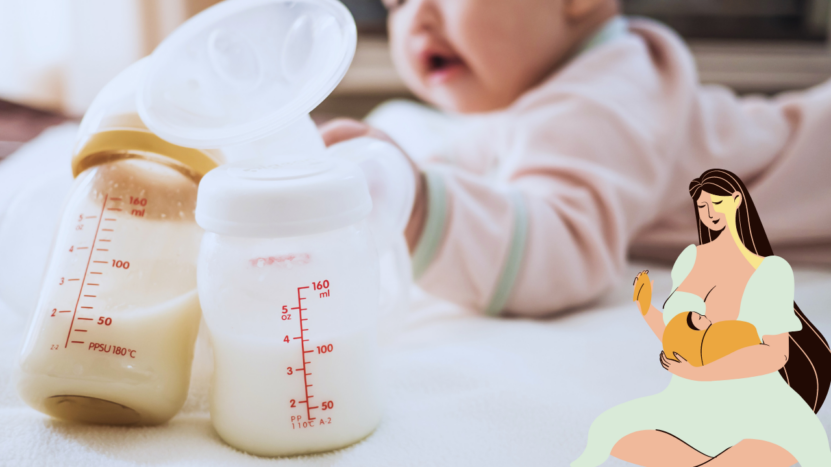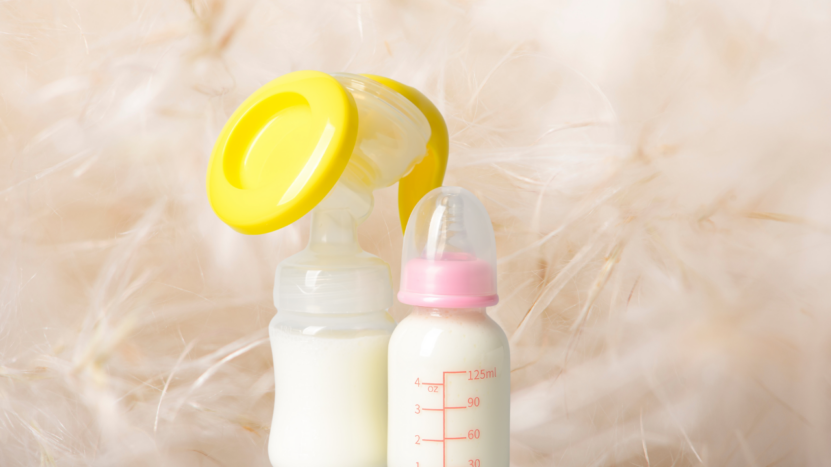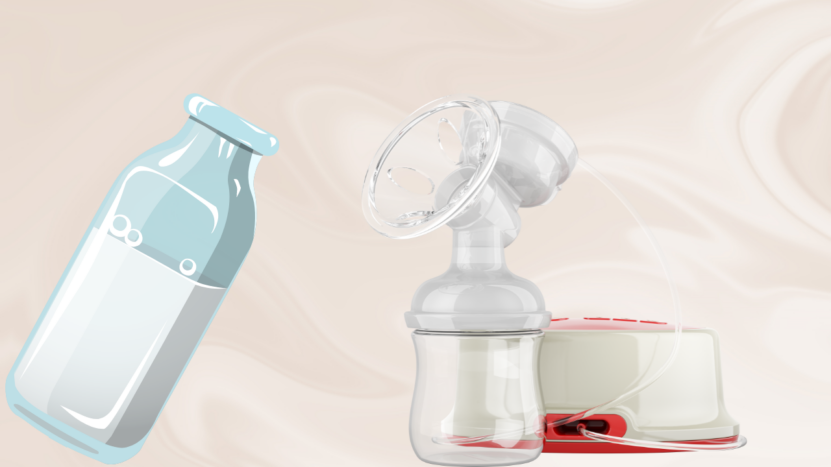Breast milk is composed of fat, proteins, carbohydrates, vitamins, minerals, and water. It also contains live cells, such as white blood cells, and beneficial bacteria that aid in immunity and digestion. When breast milk is stored, these components separate naturally—fats rise to the top while water and other nutrients settle below.
Gently swirling (not shaking) the milk helps re-integrate these elements when you’re ready to use it. But what happens when you heat it? The heat can affect these components, particularly the live cells and proteins, which are delicate and can be broken down at higher temperatures.
This is why it’s crucial to know how to handle warmed breast milk appropriately.
Is It Safe?
Let’s cut straight to the chase: Yes, you can refrigerate breast milk again after it has been warmed, but with some caveats. The real question lies in understanding how to do this safely and under what circumstances it’s acceptable.
The Two Important Factors – Time and Temperature
The two most critical factors when considering whether to refrigerate breast milk after it has been warmed are time and temperature. Here’s why they matter:
- Time: The longer breast milk stays at room temperature, the higher the risk of bacterial growth. Once it is out of the refrigerator and warmed, the clock starts ticking. Milk should ideally be used within 2 hours of being warmed to avoid contamination.
- Temperature: When you warm breast milk, it doesn’t have to reach boiling temperatures to be effective. In fact, you should never boil it as it destroys many of the valuable nutrients. Most experts recommend warming it to body temperature (about 98.6°F or 37°C). Anything beyond this can impact its nutritional and immune-boosting properties.
Why You Shouldn’t Reheat Multiple Times
@comotomobaby ✨ Breast Milk Storage Guidelines ✨ “How long is #breastmilk good for? I like to use the “rule of 4” to make it easy to remember. •4 hours at room temperature🥛 •4 days refrigerated🥛 •4 months in the freezer🥛 __________________________ ✨ Freshly pumped breast milk is good for 4 hours out at room temperature. If you’re not planning to use it within 4 hours, put it in the fridge as soon as possible. ✨ Breast milk is good for up to 4 days in the refrigerator — preferably stored towards the back of the fridge. ✨ Milk can be good for 4-6 months in the freezer — some sources say it can even be good for up to 12 months if the back of a deep freezer that reaches very low temperatures. ✨ Defrosted milk from the freezer ✨ •If defrosting in the fridge, it is good for 24 hours once defrosted. •If defrosting at room temperature or in warm water, it is good for up to 2 hours once defrosted. *Never re-freeze defrosted breast milk* ✨Once your #baby starts drinking a bottle, you have two hours for them to finish it then you can discard it. (or you can save for a milk bath!)” – @Traveling into Mamahood #momlife #momtok #breastfeedingadvice #bottlefeeding #breastfeeding #pumpingmom #milkstorage #milkstoragetips #newmomtips #Comotomo #babyregistry #babyproducts #momreels #viral
While you can refrigerate breast milk after it’s been warmed, it’s generally not advised to reheat the same batch multiple times. Each reheating causes some degradation in the quality of the milk, and reintroducing it to the fridge could expose it to bacteria, depending on how long it has been at room temperature.
What Happens When Breast Milk Is Warmed?
When breast milk is warmed, its chemical and biological properties start to change. Some of its beneficial bacteria and antibodies may be reduced by heat exposure. However, these changes are minimal as long as the milk is heated gently and consumed within a reasonable time frame.
Warmed milk, if left out, begins to lose its quality. Bacteria may start to grow, especially if the milk is warmed using less-than-ideal methods (like boiling). It’s these risks that lead experts to recommend limiting the time that breast milk is left at room temperature after warming.
Safe Reheating Techniques
If you’ve ever Googled “how to warm breast milk,” you know there are lots of methods out there—some safe, some not so much. Let’s clear that up! The safest way to warm it is by placing the bottle or storage bag in a bowl of warm water or using a bottle warmer designed for this purpose.
Avoid microwaving, as it can create hot spots and destroy many of the nutrients. If you’ve warmed breast milk using one of the gentle methods mentioned above, you can safely store it back in the fridge if it has only been out for less than two hours. Any longer than that, and it’s best to discard the milk to avoid exposing your baby to harmful bacteria.
Storage Guidelines

Proper storage is key to ensuring your breast milk remains safe and nutritious for your baby. Here are the essential guidelines for storing:
| Storage Condition | Duration |
| At room temperature (up to 77°F) | Safe for up to 4 hours |
| In the refrigerator (around 40°F) | Safe for up to 4 days |
| In a deep freezer | Safe for 6-12 months |
*Once the baby has started drinking, use the remaining breast milk within 2 hours.
Refrigerating or Freezing the Milk
Once warmed or brought to room temperature, use the milk within 2 hours. Do not refrigerate or refreeze leftover warmed breast milk.
Thaw breast milk by placing it in the refrigerator overnight or in a container of warm water. Do not thaw in a microwave or on the stove. Once thawed, use within 24 hours.
Methods for Expressing

There are a couple of different methods to express breast milk:
- Hand expression: Use your hands to squeeze or press milk out of your breast. It’s often used in the early days of breastfeeding or to help alleviate engorgement.
- Pump expression: Using manual or electric pumps to extract milk. Pumps are helpful when you need to express milk regularly, build a stash, or maintain your supply.
When to Express Breast Milk
There are various reasons why you might choose to express breast milk. Here are a few common situations:
- When extra milk is needed for storage: Build up a stash for future feedings or times when you’re away from your baby.
- When the baby is sleeping: Expressing during the night or while your baby naps can help maintain your supply.
- After waking up: Mornings are typically when supply is highest, making it a good time to pump.
- To maintain pumping while at work: Keeping up your pumping routine while at work helps maintain your milk supply.
- Before breastfeeding: If you’re having difficulty with your baby’s latch, expressing a little milk beforehand can help your baby latch on more easily.
How to Warm It

While some babies are perfectly happy drinking milk at room temperature or even straight from the fridge, others prefer it to be gently warmed. Safely warm breast milk by using a bottle warmer or by placing the bottle in warm water.
How to Know That Breast Milk Has Gone Bad
Breast milk, like any other perishable food, is susceptible to spoilage. Once it is expressed, it’s no longer protected by the body’s natural defenses. In particular, bacteria can thrive in the fat and sugar content of breast milk. You’re probably wondering: how do I know if my breast milk has spoiled? Here are a few telltale signs:
| Signs of Spoiled Breast Milk | Description |
| Smell | A sour odor indicates spoilage. |
| Taste | A sour flavor is a clear sign to discard. |
| Appearance | Normal colors include yellow, orange, blue, or green, but curdling or unusual texture indicates spoilage. |
*If you notice any of these signs, it’s time to toss the milk—better safe than sorry!
The Bottom Line
As parents, we want to do everything possible to ensure our babies get the best nutrition. Knowing whether you can refrigerate warmed breast milk again is just one small part of the whole journey, but it can make a significant difference in how you handle and store it.
So, can you refrigerate warmed breast milk again? Yes, as long as you’ve followed safe handling practices and haven’t left it out for more than 2 hours. But remember, the fresher the milk, the better for your baby’s growth and development.

